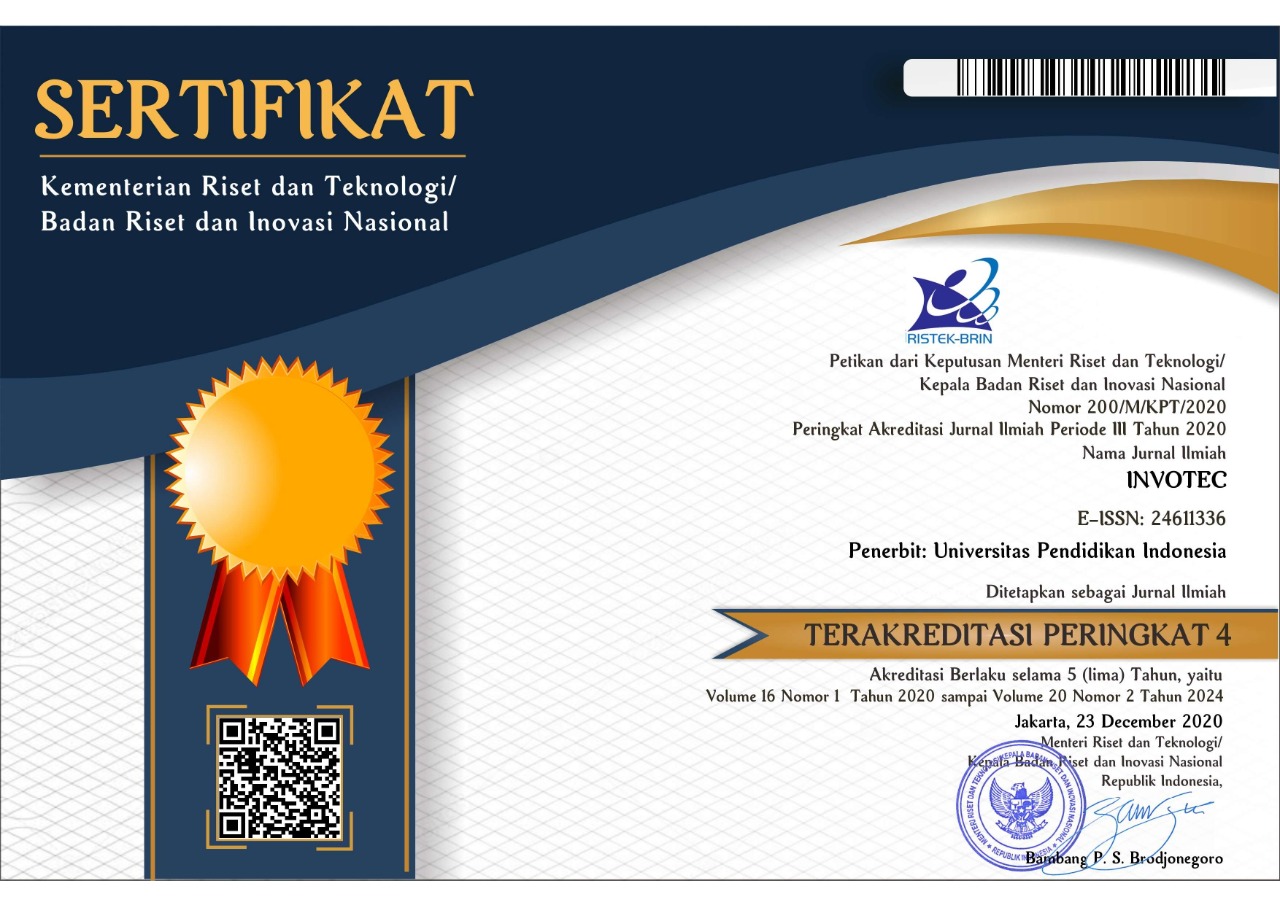The Implementation of Problem-Based Learning Model in Maze Game of Multimedia Learning for Vocational School Students
Abstract
Keywords
Full Text:
PDFReferences
Amir, T. M. (2010). Educational Innovation Through Problem Based Learning How Education Empowers Learners in the Age of Knowledge. Jakarta: Kencana Prenada Media Group.
Anneta, L. A. (2008). Video Games in Education: Why They Should Be Used and How They Are Be-ing Used. Theory into Practice, 47, 229-239.
Bakir, N. (2016) Technology and Teacher Education: A Brief Glimpse of Research and Practice that Have Shape the Field. Journal TechTrends, 60, 21-29.
Barrows, H. S. (1996). Problem-based learning in medicine and beyond: A brief overview. In L. Wilkerson & W. Gijselaers (Eds). Bringing problem based learning to higher education: Theory and Practice (pp.3-11). San Francisco: Jossey-Bass.
Boud, D. and Feletti, G., (eds) (1997). The challenge of problem based learning (2nd edition). London: Kogan Page.
Crawford, C. (2000). The Art of Computer Game Design. Washington: Washington Press University.
Davies, I. K. (2000). Learning Management. Jakarta: CV. Rajawali.
Dondlinger, M. J. (2007). Educational Video Game Desain: A Review of the Literature. Journal of Applied Educational Technology.
Headland, C., Henshall, G., Cenydd, L. A., and Teahan, W. (2014). Randomised Multiconnected Environtment Generator. Bangor University Technical Report CS-TR- 004-2014.
Johnson, D. W. and Johnson, F.P. (2008). Group theory and group skills. Boston: Allyn and Bacon.
Kent, S. L. (2001). The First Quarter: A 25-year History of Video Games. Washington: BWD Press.
Lawrence J., Yannakakis, G., and Togelius, J. (2014). Cellular Automata for Realtime Generation of Infinite Cave Level. ACM.
Moursund, D. (2006). Introduction to Using Games in Education: A Guide for Teachers and Parents. Oregon: University of Oregon.
Munir. (2013). Multimedia Concepts and Applications in Education. Bandung: Alfabeta
Perkins, D. (1992). Smart School: Better Thinking and Learning for Every Child. New York: The Free Press.
Siburian, J. (2010). Science Learning Model. Jambi: Universitas Jambi
Tan, O.S. (2003). Problem based learning innovation: Using problems to power learning in the 21th century. Singapore: Thomson Learning.
DOI: https://doi.org/10.17509/invotec.v14i2.14358
Refbacks
- There are currently no refbacks.
Copyright (c) 2018 Innovation of Vocational Technology Education

This work is licensed under a Creative Commons Attribution-ShareAlike 4.0 International License.
This journal provides immediate open access to its content on the principle that making research freely available to the public supports a greater global exchange of knowledge.

This work is licensed under a Lisensi Creative Commons Atribusi-BerbagiSerupa 4.0 Internasional.



